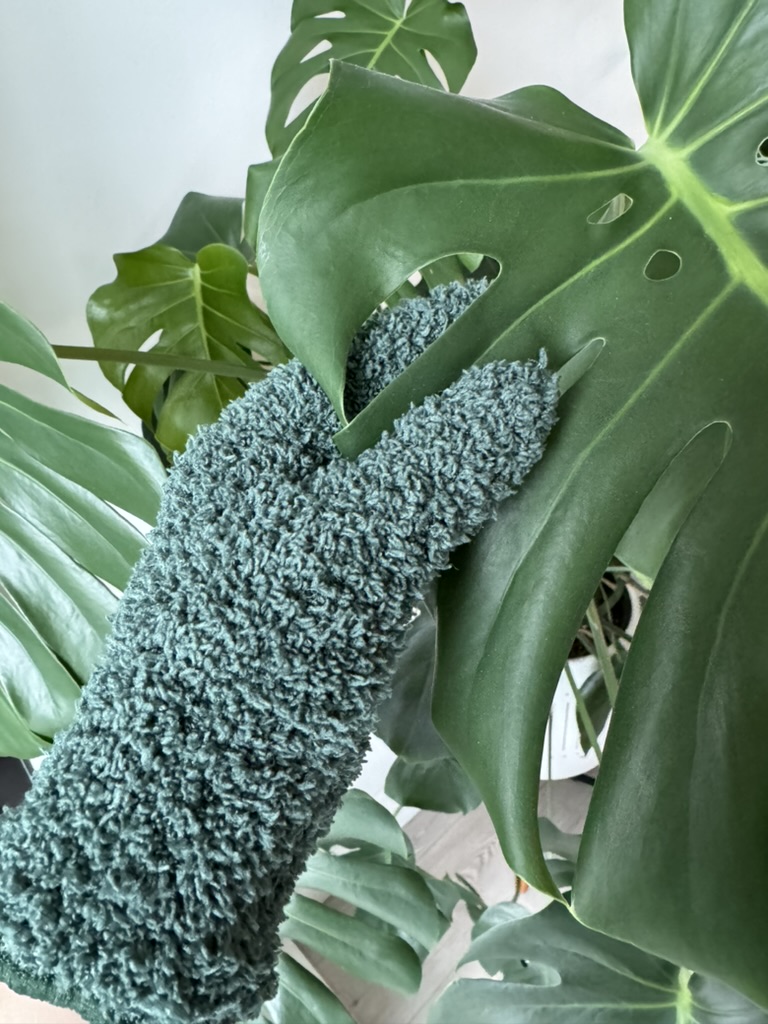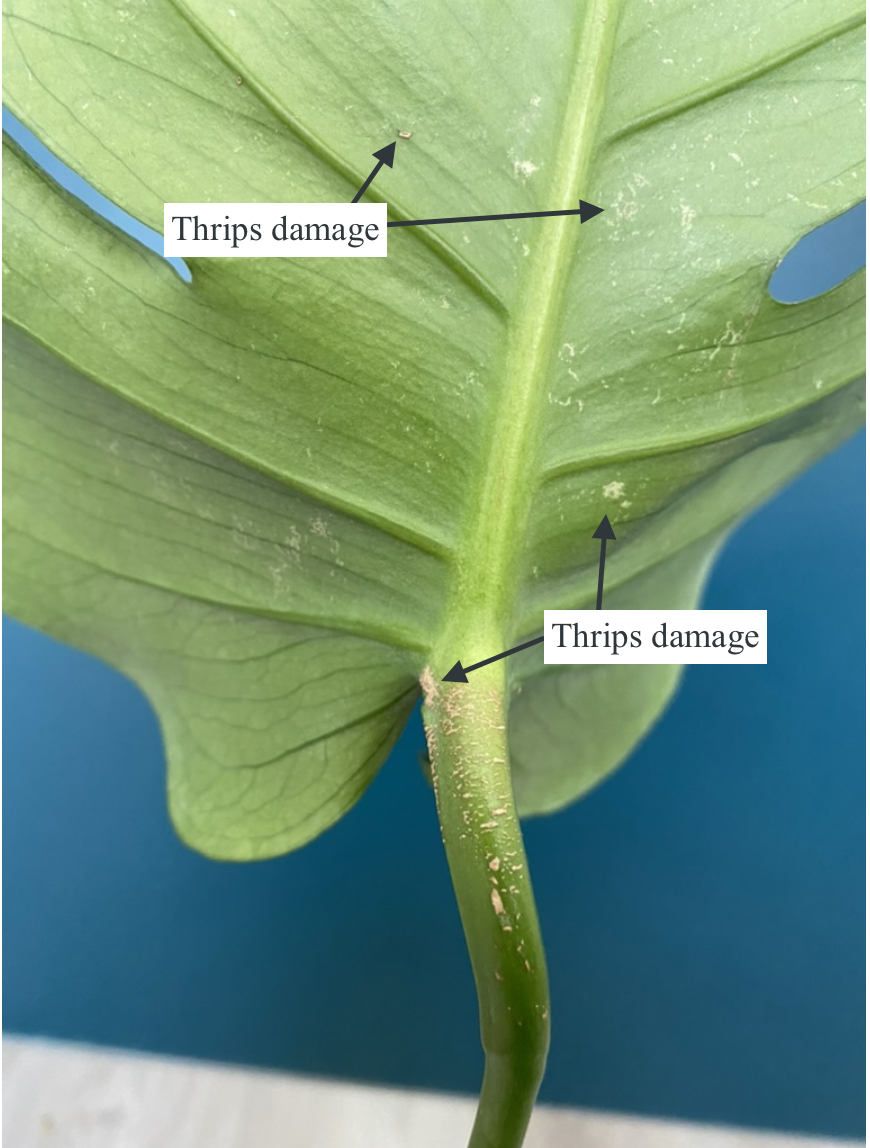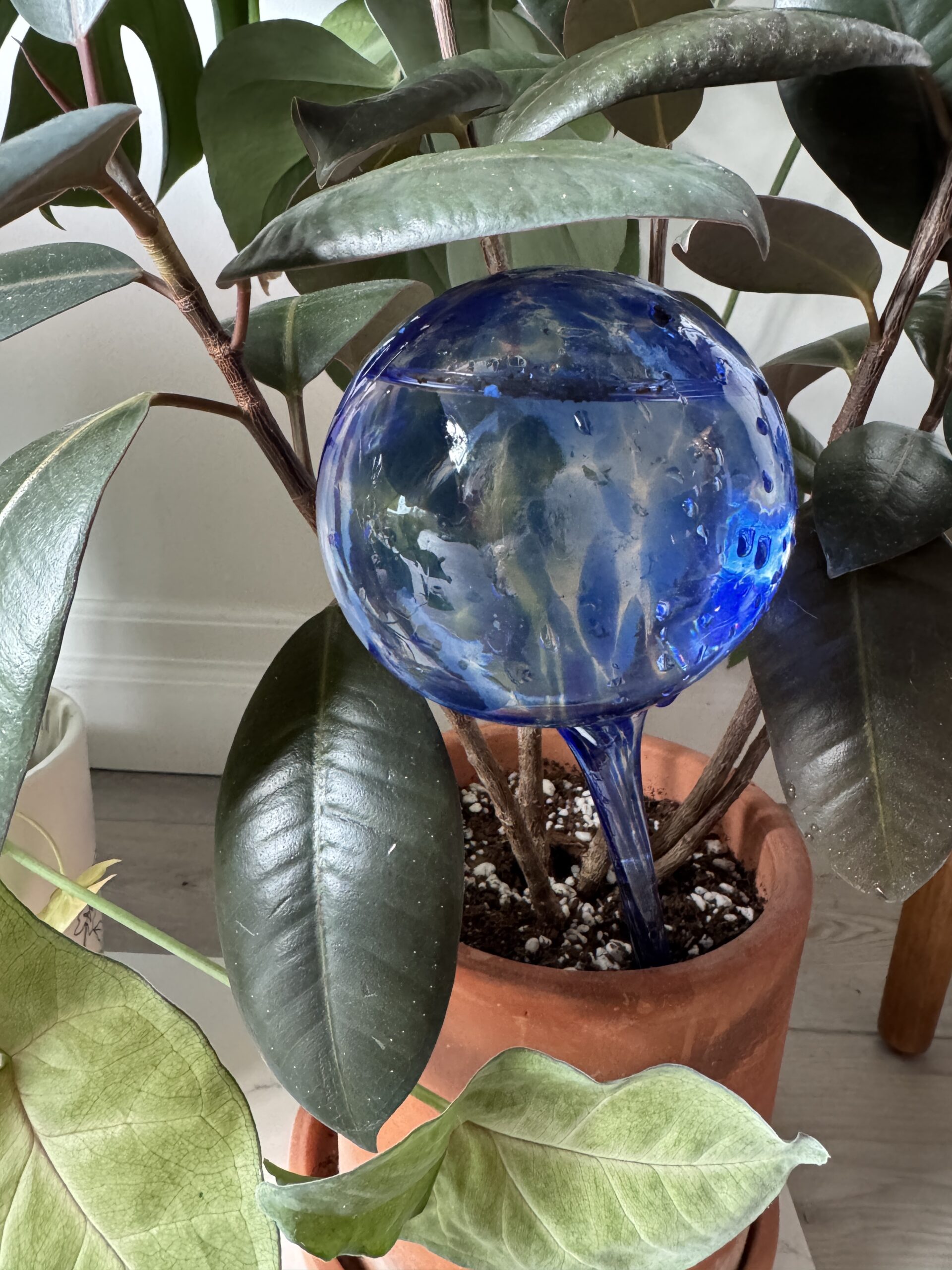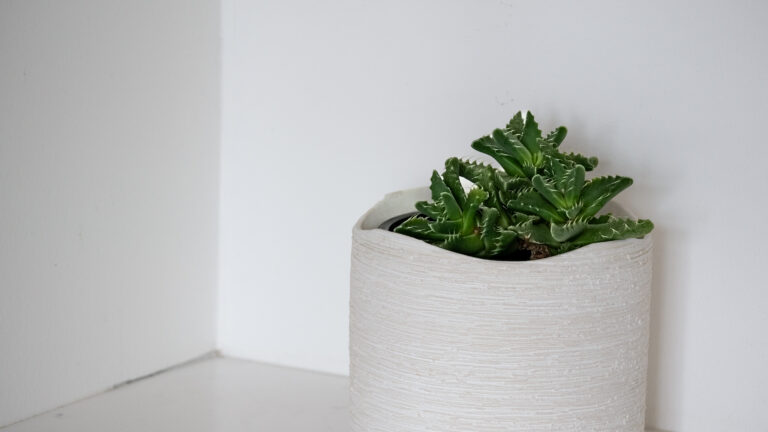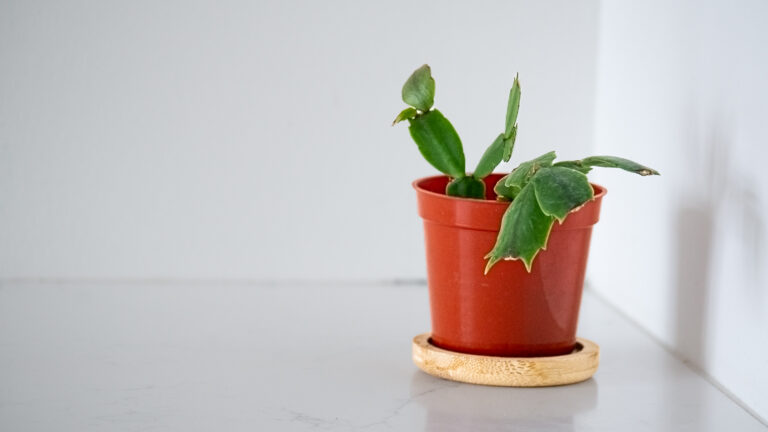Living Stones or Lithops is a member of the Aizoaceae family. It is native to Southern Africa.
Lithops is referred to as Living Stones because of their resemblance to stones. Lithops is a slow-growing prehistoric plant. I once took a timelapse, and it took roughly three months for a new leaf to full emerge.
There are around 1800 species of the Aizoaceae family.
Lithops Appearance & Unique Features
Lithops are known for their resemblance to stones. The colours of Lithops vary from succulent to succulent. Mine have more green colouring in the stem area, and the tops are quite red when they are growing in.
When new growth happens, you can see new leaves splitting from the center or from the sides of older leaves. Any part of the Lithops is free game for a new leaf to emerge.
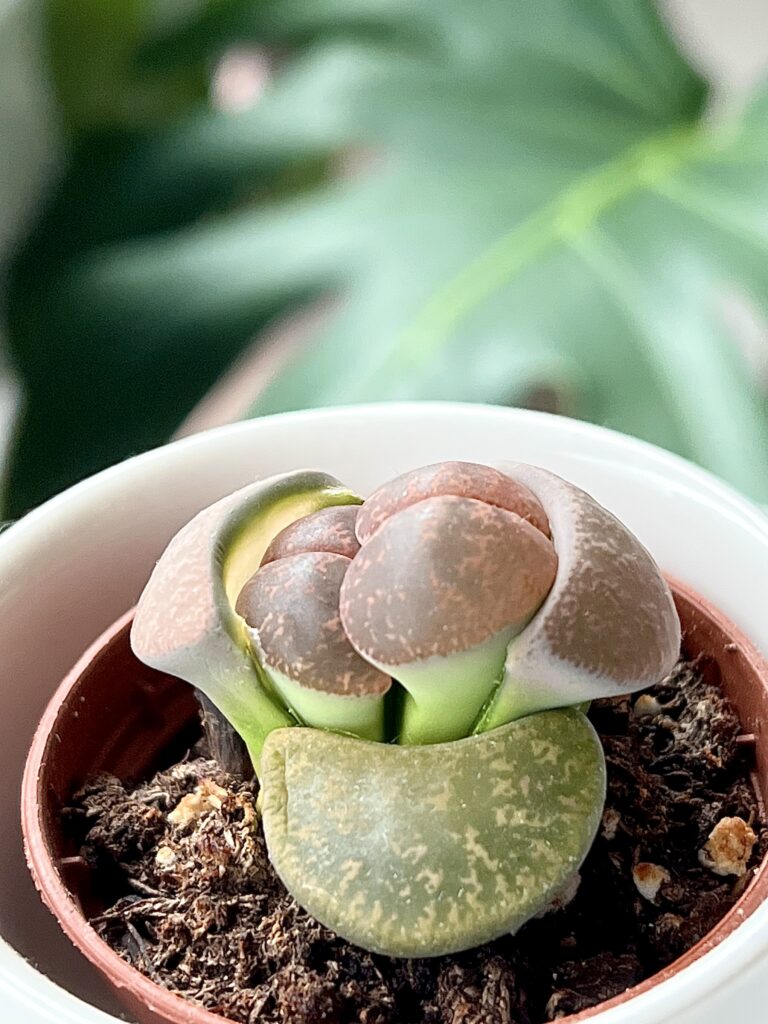
Light Requirements for Lithops
Living Stones thrives in Bright, direct light for only for a couple hours a day, and indirect medium-light for the majority of the day.
I keep my Lithops in a east-facing window in the summer, and a south-west facing window in the winter.
Ideal Temperature & Humidity for Lithops
Living Stones prefer a temperature between 18-26 degrees celsius. They also prefer lower humidity. Since they come from drier regions, with less humid air. However, they will be fine in average household humidity levels (40-60%).
I keep my Lithops closer to the window, away from the humidifier (I use the Levoit Hybrid Ultrasonic Humidifier (LV600HH)).
I use my humidifier to ensure the humidity levels in my apartment stays between 40% and 60%. Since I live in Canada and the winters can be very dry, and the humidity can drop below 30% humidity, so its helpful to set the humidity at about 45% or 50% in this season to keep all of my plants happy.
Lithops Growth
On average, Lithops can grow up to 1″ high. New foliage erupts from old leaves of this succulent. It will erupt from anywhere on the Lithops, from the centre of an old leaf to the stem.
Sometimes, you will have two new leaves erupt from the centre of the old leaf (like in the video below).
New growth can take three months to fully emerge.
Although Living Stones require very little fertilizer, you can feed them with a diluted, low-nitrogen cactus fertilizer once a year in early spring to support healthy growth.
How & When to Repot Lithops
Living Stones rarely need repotting due to their slow growth (and preference for tight spaces), however, you will know it is time repot your Lithops if it has been 3-5 years since your last repot, the soil has become compacted, or you see roots growing out of the bottom of drainage holes. The best time to repot is before your Living Stones enters its active growth phase in the spring.
Grab a small pot that is 2″ larger than its current pot that has a drainage hole. This is crucial for the overwatering sensitive Lithops. Use a fast-draining succulent potting mix, and add a little to the bottom of the new pot.
Gently remove the Living Stones from its old pot, and gently detangle the roots (if possible). It’s better to exercise caution and detangle less vs. more so you don’t cause root damage, and unnecessary trauma to your plant. Place your Living Stones in its new pot, and add additional soil around the plant. Make sure the roots are buried, but don’t cover up the Lithops itself. Gently pat down the soil, water, and place it back in its original location within your home.
For everything you will need while repotting, check-out my guide on repotting essentials.
Lithops Blooming: When & What to Expect
Lithops can flower, but when indoors, their blooms are less frequent. Their typical flowering period is in the fall or winter seasons. Living Stones blooms are usually white or yellow (this is species dependent), and they can last anywhere from several days to a week.
Flowering will only occur if mature plants receive enough adequate sunlight, and proper care per season (e.g. a dry rest period before its blooming period).
To increase the chances of indoor blooms, make sure you provide your Living Stones with plenty of bright light, and a careful watering schedule. Most people overwater this plant, and it is super sensitive to it.
How to Propagate Lithops (Division & Seeds)
The easiest way to start a new Lithops from an existing plant is by division.
- Division: Sometimes multiple Living Stones will be potted together. In this situations, you can remove the entire plant from the pot, gently separate the plants, and plant the individual plants into new pots. Make sure you water the newly divided plants and place them in a bright location with indirect light.
- Seed: The easiest way to propagate Lithops would be by seed, which you can acquire from specialist nurseries. However this may not be accessible to everyone.
Patience is key with propagation. Give your new plant time to settle into its environment. Once you see new growth, you know your plant is well established.
Watering Lithops: How & When
Living Stones likes to dry out between waterings (likely once a month). To determine if your plant needs water, you can stick your finger in the soil (1 to 2 inches) and if it is dry, its ready for water!
If you don’t want to get your hands dirty, you can use a moisture meter.
I typically bottom water my Lithops through the drainage hole of the pot on a tray. It’s the easiest way to know if it is thirsty or not. Overwatering can lead to annoying pests like fungus gnats, root rot, or the death of your plant.
You can top water, but it’s best to do so in a pot with a drainage hole, until water is flowing out of the hole. If your pot doesn’t have a drainage hole, you might accidentally drown your plant or make some fungus gnats very happy.
You should top water from time to time to make sure any built up minerals can wash through the plant. The water should drip out of the bottom of your drainage hole.
If you are worried about watering your Lithops while on vacation, check-out my guide on 3 ways to water your plants while on vacation.
Common Pests & Problems in Lithops
Lithops can face the following pests and problems.
Common Pests for Living Stones
- Mealy Bugs: These look like little white cotton balls on the plant. You can remove these with your fingers if you catch them early enough, but I would use a cotton swab with a drop of Isopropyl alcohol and try to scrape them off of your Lithops.
- Fungus gnats: Spray your Lithops with a mixture of neem oil, dish soap and water. I also let the soil dry out and add dryer sheets on top of the soil so the gnats can’t sense the moisture on the soil.
Other Common Problems for Living Stones
- Overwatering: Root rot happens from overwatering your Lithops with insufficient drainage. You can improve the drainage of your Lithops by ensuring your plant is potted in a planter with a drainage hole and using a well draining soil (something with a decent amount of perlite). You can also end up with fungus gnats or fungal disease from overwatering.
- Underwatering: Even Lithops prefer to be underwatered over overwatered, you still have to remember to water it on a consistent schedule. Signs of underwatering an include leaves becoming shrivelled, discoloured or dry.
- Sunburn: Even though you will often find Lithops in bright, sunny environments, they can be burned. Their leaves can appear bleached or a bit greener. To fix sunburn in the plant you can move it to a less sunny place.
- Improper Lighting: Incorrect lighting can lead to a leggy (etiolated), leaning Lithops. This happens if the plant doesn’t get enough sun. The stems will grow really long trying to reach the sun and the top of the Lithops will turn to a faded colour. However, too much sun can lead to scorched leaves.
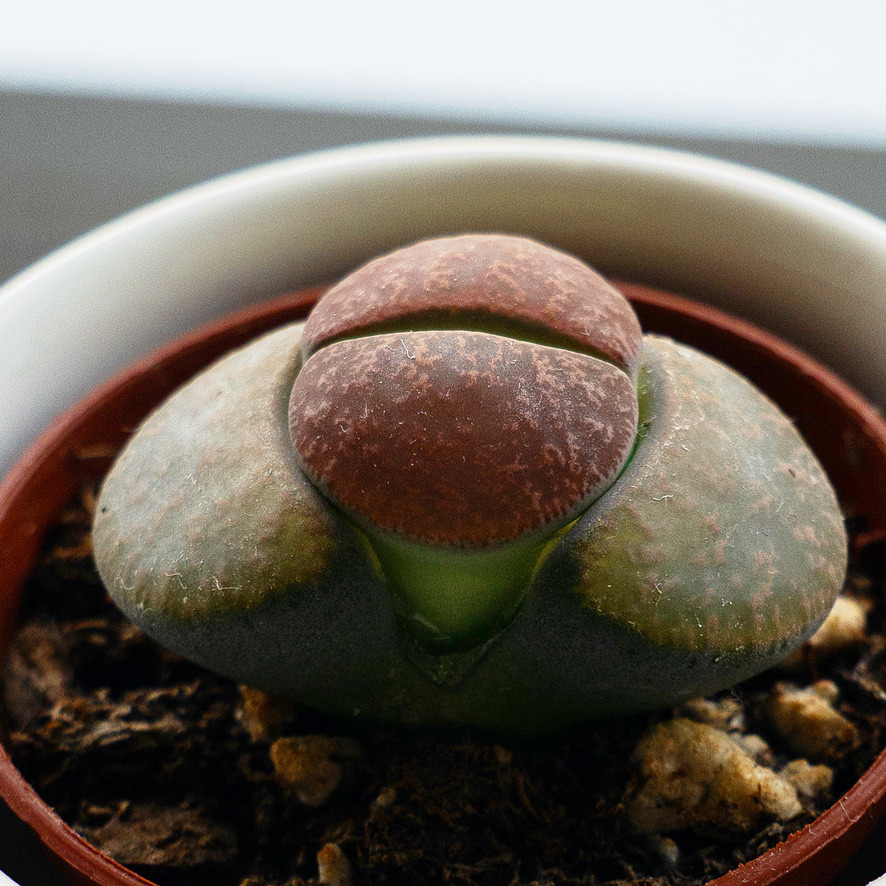
Lithops Toxicity
Living Stones are considered non-toxic to both humans and pets. This makes the Living Stones a safe choice for households with curious children or animals. All parts of the plant are free from harmful compounds, so accidental contact or ingestion is unlikely to cause serious issues.
However, as with any plant, it’s best to discourage pets or children from chewing on Lithops, as ingesting large amounts of any non-food plant material can lead to mild digestive upset.
‘Lithops’ Living Stones Quick Care Guide
| Scientific Name | Lithops |
| Nickname | Pebble Plants, Living Stones |
| Origins | Southern Africa |
| Light | Bright, direct (only for a couple hrs a day) and indirect, medium-light |
| Temperature | 18-26 degrees celsius (preferred) |
| Humidity | Low |
| Height | Up to 1″ high |
| Blooms | Occasionally |
| Propagate | Seeds, Division |
| Water Frequency | When dry (likely once a month) |
| Pests | Fungus gnats, Mealybugs |
| Common Problems | Overwatering (root rot), Leggy (etiolated), Sunburn |
| Toxicity | Non-toxic |
References
Below is a list of external sources I consulted while writing this post. This post is a mixture of my own experiences, and the external sources listed below:
Jomo Studio – Lithops
Greg App – Lithops Temperature
Wisconsin Horticulture – Living Stones Lithops
Jomo Studio – How to take Care of Lithops
Wikipedia – Lithops

